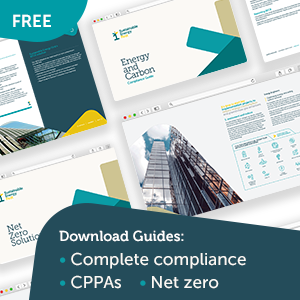The first Streamlined Energy and Carbon Reporting (SECR) compliance phase is well underway, and many businesses have recently submitted, or are due to submit, their reports to Companies House. To keep you informed and on the right path to successful compliance, we’ve gathered up a list of key resources, guides and articles.
If you need advice from the basics to submission requirements, we’ve got you covered:
SECR Pocket Guides
Pop your information in the form to receive our free pocket guide on SECR. We’ve a standard business guide, as well as a charity guide for SECR.
SECR: 7 possible changes to look out for in the future
For companies that now have processes in place to gather and compile their energy and carbon data the next SECR report will be hopefully easier, but will things change in the future? Will the Government move the goalposts or catchment criteria?
Key topics from 2020
The most common articles on SECR from our Energy Advice Hub were around setting the right intensity ratio, and how to report on emissions from homeworking, which now accounts for a significant proportion of carbon for many firms.
Beyond compliance: unlocking the hidden potential of your SECR reporting
We’ve compiled a quick guide to harnessing your SECR report to drive positive change in your organisation which can help you on your journey to carbon reduction and net zero goals.
Scope 3 emissions: your frequently asked questions
Scope 3 is likely to form the basis of any future greenhouse gas reporting as the UK moves towards the net zero goals, and in part it’s required through SECR reporting. Find out more with our Scope 3 emission FAQs.
Don’t be left behind with your SECR reporting – your reputation is at risk.
SECR information must be disclosed each year in your company’s Directors’ Report as part of your annual filing obligations – this key SECR article sets out the key dates for action and obstacles to overcome.
SECR reporting – is your business making any of these 5 common mistakes?
- Not having a clear organisational boundary
- Leaving out overseas emissions
- Not choosing the best intensity ratio
- Getting conversion factors wrong
- Ignoring value chain emissions
Find out how to overcome these in the article.







